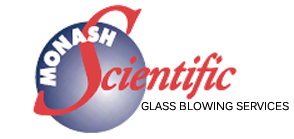
Wine Analysis Home
Titration
- Titration is a procedure used to determine an unknown concentration of a chemical solution.
- This is achieved by reacting the solution, whose concentration is not known, with the chemical solution whose concentration is known.
- The volume of one solution must be accurately measured.
The concentration of that or the other solution must be accurately known.
- As an example-
- a sodium hydroxide (NaOH) solution of a approximately known concentration (~0.1 M) can be reacted with exactly 10.000 ml of a 0.100 M hydrochloric acid (HCl) solution.
- A colour indicator solution or pH meter is used to indicate the end point .
- The volume of the NaOH (sodium hydroxide) solution required, to react with the known volume and concentration of the HCl (hydrochloric acid) solution to reach the end point, is used to calculate the exact concentration of the unknown NaOH solution.
That is, how much NaOH is dissolved in the NaOH solution.
- Normally the unknown (NaOH) is delivered by a burette into a beaker, conical flask or even a pear shaped flask into which an accurate volume of the known (HCl) has been delivered by a bulb pipette ( see diagram ).
Related topics -
